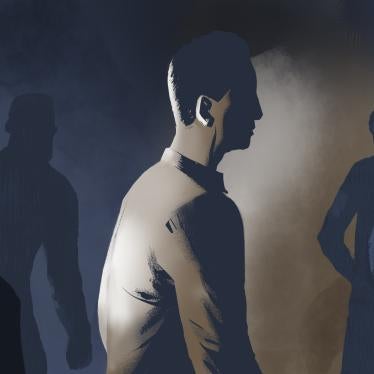It is well known that US prisons and jails have become de facto mental health facilities. Hundreds of thousands of persons with mental disabilities spend time behind bars each year, with the surging numbers driven by the limited availability of community-based outpatient and residential mental health programs and resources, the lack of criminal justice diversion programs, and the persistent national problems of poverty and homelessness.
What is less well known is that most persons with mental illness who are incarcerated face living conditions that at best can be characterized as counter-therapeutic; at worst, they are dangerous. Part of the problem arises from staff use of force. Persons with mental illness in inpatient hospitals are not at risk of needless or punitive beatings, assault with pepper spray or being stunned with conductive electrical devices. But those in jails and prison are.
Prisons can be dangerous places, and staff are authorized to use force to protect safety and security. But force against any prisoner (with mental disabilities or not) may be used only when – and to the extent – necessary and as a last resort, and never as punishment. Nevertheless, a yearlong study by Human Rights Watch found that some correctional staff respond with violence when prisoners with mental illnesses, such as bipolar disorder or schizophrenia, engage in minor and non-threatening behavior that is symptomatic of their illness. They use force in the absence of any emergency and without first making serious attempts to secure the inmate's compliance through less punitive means. Some staff also use force to punish or retaliate against inmates who have annoyed or angered them.
Research by Human Rights Watch reveals that staff have needlessly or punitively deluged inmates with mental illness with chemical sprays; shocked them with electric stun devices; strapped them to chairs and beds for days on end; broken their jaws, noses, ribs; or left them with lacerations, second degree burns, deep bruises, and damaged internal organs. The violence can traumatize already vulnerable men and women, aggravating their symptoms and making future mental health treatment more difficult. In some cases, the use of force has caused or contributed to prisoners' deaths.
There is no national data on the prevalence of staff use of force in the more than 5,100 jails and prisons in the USA. But experts contend the misuse of force against prisoners with mental health problems is widespread and may be increasing.
Mental disability and misconduct
Most jails and prisons in the USA are bleak and stressful places in which few prisoners are able to engage in productive, meaningful activities. Prisoners with mental disabilities may struggle more than others to adjust to the extraordinary stresses of incarceration, to follow the rules governing every aspect of life, and to respond promptly to staff orders.
In the trenchant words of Professor Hans Toch, prisoners with mental illness can be "disturbed and disruptive," "very troubled and extremely troublesome" (Toch, 2014). They misbehave and are sanctioned for disciplinary infractions at higher rates than other prisoners. Some engage in symptomatic behavior that corrections staff find annoying, frightening, and provocative, or which, in some cases, is dangerous. For example, they may refuse to follow orders to sit down, to come out of a cell, to stop screaming, to change their clothes, to take a shower, or to return a food tray. They may smear feces on themselves or engage in serious self-injury – slicing their arms, necks, and bodies; or swallowing razor blades, inserting pencils, paper clips, or other objects into their penises. Sometimes prisoners refuse to follow orders because hallucinations and delusions have impaired their connection with reality. An inmate may resist being taken from his cell because, for example, he thinks the officers want to harvest his organs or because she cannot distinguish the officer's commands from what other voices in her head are telling her.
Correctional officers and jail deputies are rarely taught how to recognize the symptoms of mental illness and understand how they can affect behavior. Custody staff are also rarely trained in and required to use verbal de-escalation techniques or to seek the intervention of mental health staff before resorting to force against inmates with mental disabilities. Force can be the staff response to misconduct, even when that condition prevents the prisoner from being able to comply with staff orders, and even when skilled verbal interventions might obviate the need for force. No one suggests staff should not intervene forcefully in an emergency to prevent an inmate from serious self-harm. But in many cases there is no such emergency. Well-trained staff can take the time to pursue alternatives before resorting to force.
Mental health services
Deficiencies in correctional mental health services are pervasive across the USA. Because of funding shortages and lack of political support, correctional agencies typically lack sufficient numbers of properly qualified mental health professionals. Inmates are often not properly diagnosed, do not have timely access to mental health professionals, and do not receive care based on individualized treatment plans. Treatment is often limited to medication and typically does not include other effective therapeutic mental health interventions and psychiatric rehabilitation programs. Many prisoners with mental disabilities are not receiving mental health treatment that could promote recovery, ameliorate distressing symptoms, and increase their skills and coping strategies to better handle the demands of life behind bars as well as, once they are released, life in the community.
Prisoners with mental illness who are untreated or undertreated are more likely to engage in misconduct that is met with force. Inmates diagnosed with mental illness are also disproportionately represented in the isolation units to which prison officials send their more difficult inmates. The harsh conditions of being held alone in a cell 23 hours or more a day with little or nothing to do, coupled with the paucity of mental health treatment characteristic of such units, can lead to an increase in symptoms, more episodes of acute psychosis, and further misconduct. Experts say that use of force is more common in solitary confinement units than elsewhere in correctional facilities.
Use of force policy and practice
Even when policies clearly limit the use of force to situations in which serious danger is imminent or a significant disruption must be addressed, staff may turn much too quickly to force, use more than is needed, or use it for punitive purposes. Serious deficiencies in use of force policies and practices are widespread across the USA. Officials fail to ensure one or more of the following: sound and comprehensive use of force policies; effective training for and supervision of staff on the proper use of force; special provisions to protect prisoners with mental disabilities from unnecessary force; strict compliance with reporting policies; effective supervisory review of all use of force reports; thorough investigations of questionable use of force incidents; and meaningful disciplinary measures for staff who violate policies and procedures.
Unwarranted or malicious use of force against men and women with mental illness is more prevalent in more violent facilities where all prisoners are at heightened risk of abuse. It is more prevalent in facilities that rely on force instead of mental health treatment to respond to rule-violating behavior that is symptomatic of mental illness. And it is more prevalent in poorly managed facilities: a badly run jail or prison will almost always have more instances of force against inmates, including those with mental disabilities, than one that is well-run through excellent leadership.
An isolated instance of unnecessary force can occur in any correctional facility. But when correctional officials fail to establish and enforce a commitment to minimize the use of force, patterns of abuse can emerge. Good use of force policies, in and of themselves, are not enough to prevent such abuse. Effective leadership is required to ensure that the policies are reflected in practice.
Public officials are responsible for ensuring humane treatment and respect for the rights of the men and women they confine in jail and prison, including those with mental illness. Those responsibilities are too often ignored: prisoners with mental disabilities continue to suffer pain, injury and even death from needless or punitive staff use of force. Such abuse cannot be squared with the fundamental human rights prohibition against torture or cruel, inhuman or degrading treatment[1]. Nor is it consistent with the rights of persons with mental disabilities to be treated with respect for their inherent dignity and to have reasonable accommodations for their disabilities[2].
Notes
1. The USA is a party to the ICCPR and CAT. International Covenant on Civil and Political Rights (ICCPR), adopted December 16, 1966, G.A. Res. 2200A (XXI), 21 U.N. GAOR Supp. (No. 16) at 52, U.N. Doc. A/6316 (1966), 999 U.N.T.S. 171, entered into force March 23, 1976, ratified by the USA on June 8, 1992, art. 10(1); Convention against Torture and Other Cruel, Inhuman or Degrading Treatment or Punishment (CAT), adopted December 10, 1984, G.A. res. 39/46, annex, 39 U.N. GAOR Supp. (No. 51) at 197, U.N. Doc. A/39/51 (1984), entered into force June 26, 1987, ratified by the USA on October 21, 1994.
2. The USA has signed but not ratified the International Convention on the Protection and Promotion of the Rights and Dignity of Persons with Disabilities (CRPD), G.A. Res. 61/106, Annex I, U.N. GAOR, 61st Sess., Supp. (No. 49), at 65, U.N. Doc. A/61/49 (2006), entered into force May 3, 2008.
Acknowledgements
This paper is adapted from Human Rights Watch, Callous and Cruel: Use of Force against Inmates with Mental Disabilities in US Jails and Prisons (May 12, 2015), https://www.hrw.org/reports/2015/05/12/callous-and-cruel.
Reference
Toch, H. (2014) "Humpty Dumpty in the prison," Correctional Mental Health Report, Vol. 16 No. 4, pp. 51-2.







